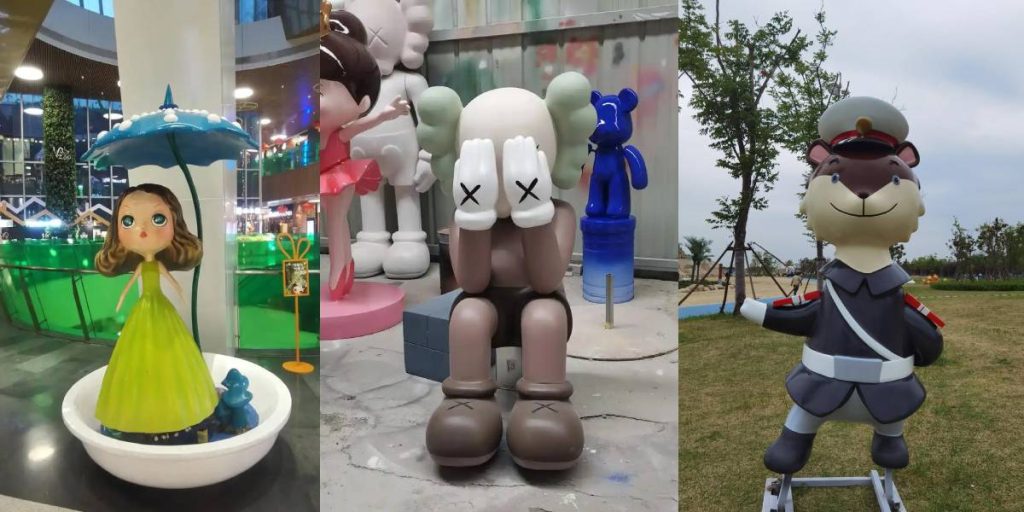
We bought a fiberglass sculpture and wanted to know its production process. Today, the editor will explain the production process of fiberglass sculpture in detail.
Due to its advantages of easy molding, light weight and high strength, fiberglass was quickly applied to sculpture creation. There is a certain market demand for fiberglass sculptures, but it is not easy to make a good fiberglass sculpture. There are also some regrettable works in fiberglass sculptures, which have affected the reputation of fiberglass sculptures to a certain extent. To complete fiberglass sculptures with high quality, it is necessary to organically separate the various links of sculpture manufacturing. Fiberglass sculptures are divided into round sculptures and relief sculptures. The production of round sculptures is the most difficult. If the production method of round sculptures is mastered, relief sculptures can naturally be produced. Sculptures made of fiberglass materials have bright colors, smooth lines, beautiful appearance, and easy installation. It can be made into a variety of surface effects such as imitation gold, imitation copper, and imitation stone, thus showing a distinct sense of modernity and the times. The production and processing technology of FRP is divided into the following steps:
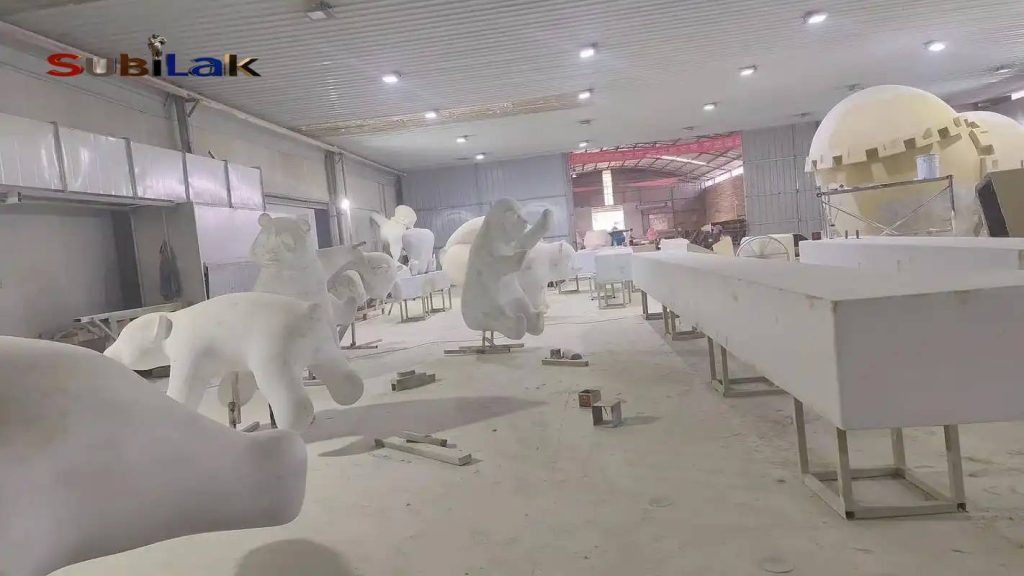
Step 1: Design and Molding
Excellent sculptures require creators to have a good design foundation. The design of FRP sculptures should take into account the characteristics of their materials and processes. FRP technology is easy to form beautiful streamlined products, which can highlight the modern and contemporary sense of the work. Arc and streamline shapes can be used preferentially in design. In addition, due to the advantages of FRP being light and high-strength, it can create works with strong dynamics and small support areas. Sometimes FRP sculptures need to be coated with a gel coat surface afterward. Because the gel coat has self-leveling properties, and the gel coat layer has a certain leveling effect under the action of surface tension during curing, it is not suitable for expressing delicate textures in this case. These should be considered during design and creation.
The original mold of the FRP sculpture can be molded with mud, and ordinary molds are completed by professionals. After the sculpture work is completed, after natural drying and having a certain strength, the FRP sculpture mold manufacturing can be stopped.
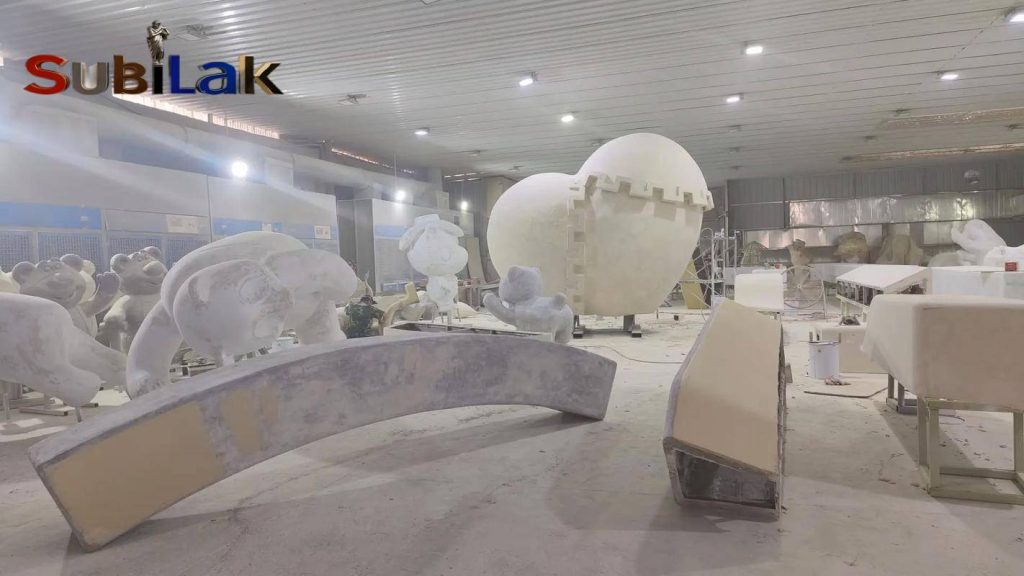
Step 2: FRP Manufacturing
The FRP sculpture manufacturing adopts the hand paste molding method. Before manufacturing, the mold can be combined into several units based on the shape characteristics of the sculpture and the convenience of molding and demoulding. The unit products are molded in this way, and then they are combined into a whole. Finally, the product is processed and painted as a whole, and a glass fiber reinforced plastic sculpture work is completed.
Step 3: Mold manufacturing
Mold manufacturing is the key to glass fiber reinforced plastic molding. Gypsum is often used in the manufacturing of glass fiber reinforced plastic sculpture molds. A better method for manufacturing glass fiber reinforced plastic sculpture molds is to use silicone rubber and glass fiber reinforced plastic materials to make molds. The specific mold manufacturing method is: apply the prepared silicone rubber to the original mold several times, and the silicone rubber layer should be more than 1mm. After the silicone rubber is cross-linked, a glass fiber reinforced plastic layer with a thickness of about 3mm is formed on the silicone rubber. After the glass fiber reinforced plastic is cured, the overall mold is cut along the divided unit blocks. When cutting, pay attention to cutting the glass fiber reinforced plastic layer and the silicone rubber layer at the same time. Make connecting ribs between unit blocks, and positioning grooves should be set at the connecting ribs to ensure that the unit block molds are combined into a whole through the connecting ribs. After the above work is completed, demold the FRP unit block, then remove the silicone rubber layer, and immediately put the removed silicone rubber block back into the FRP unit mold. Dust removal of the original mold → Silicone rubber preparation → Silicone rubber layer manufacturing → FRP layer manufacturing → Mold segmentation → Connecting rib manufacturing → Demolding and assembly mold.
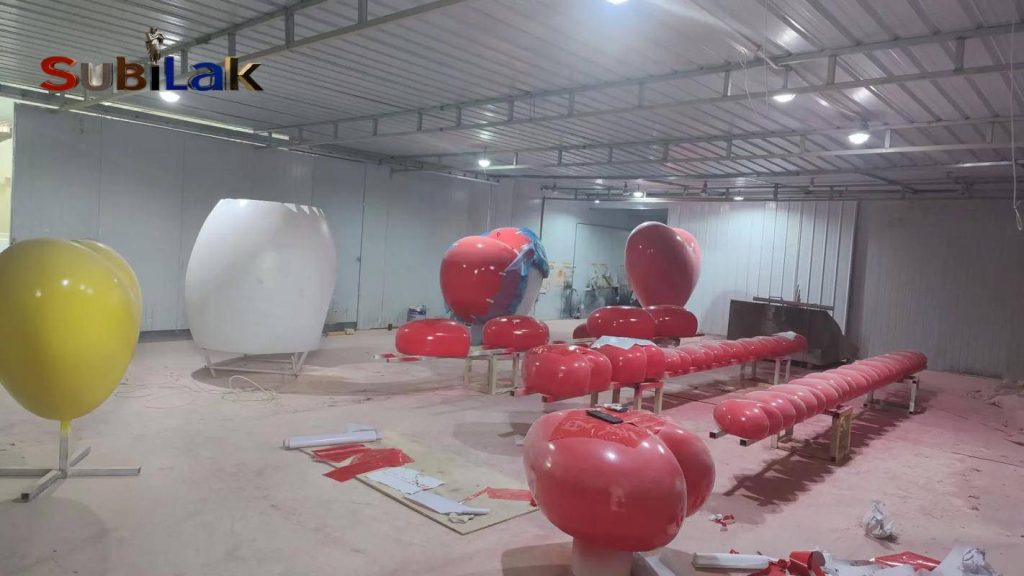
Step 4: Molding and manufacturing
The FRP sculpture adopts the hand paste molding method, and the molding line should be designed before manufacturing. Start from one end of the sculpture, combine a part of the mold and paste the product. After the previous part is solidified, combine the mold again and continue to paste the product. Under the premise of facilitating the molding operation, combine as many mold unit blocks as possible at a time. Repeat this process, and finally leave a unit block, which is pre-molded and glued to the overall sculpture. The parts of the FRP sculpture that are similar to the horns, legs, and tails of animals that are difficult to manufacture by the above method can be made into a rough shape with the corresponding metal materials, and then the FRP is molded on the metal material and polished. An important issue in the molding of FRP sculptures is structural reinforcement. The reinforcement material generally uses metal profiles, which are welded into the inner skeleton of the sculpture. During the molding process, the metal skeleton is gradually buried in the sculpture. In this way, the rigidity and strength of the FRP sculpture are improved, and its service life is increased. Finally, the FRP sculpture is assembled through the metal skeleton, the mold is filled with surface putty, the chopped felt is laid, the lattice cloth is laid, the skeleton is buried, and the final product is demoulded. The sculpture surface is generally more complicated, and special treatment should be given to the process layer. The glass fiber length in the resin putty for the surface layer of the sculpture should be 10mm, and the proportion of the resin putty for the surface of the sculpture is polyester resin glass fiber CaCO3 filler pigment peroxide methyl ethyl ketone naphthoate cobalt dosage 1002010022-40.5-4.
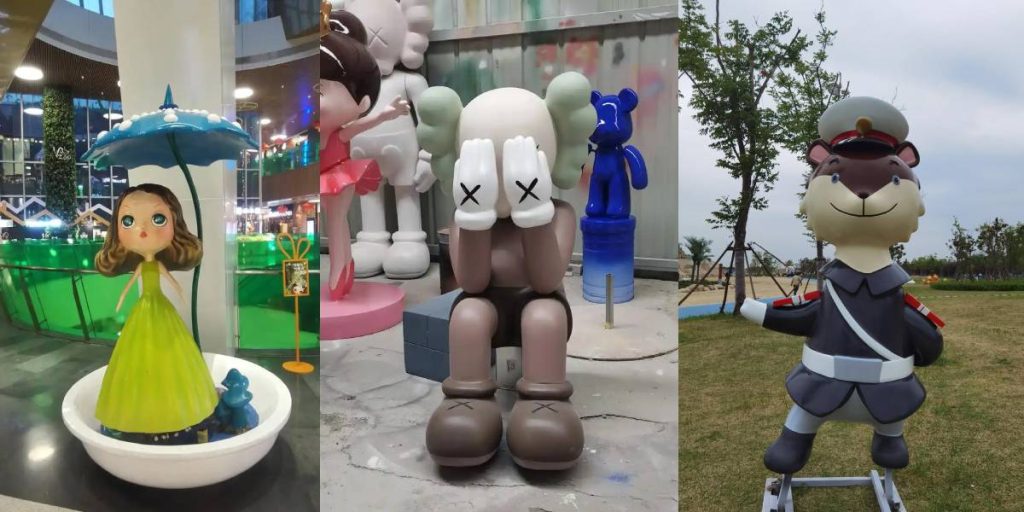
The last is the post-processing. The post-processing of FRP sculptures is to repair some defects of the product after demoulding, and more importantly, to create the surface effect. The commonly used surface effects are imitation copper and imitation bronze, and the key is to prepare the color paste. Among them, the amount of molybdenum chromium red phthalocyanine blue phthalocyanine green dibutyl ester copper gold powder is 550.30.7240200, and the amount of chrome yellow phthalocyanine blue molybdenum chromium red dibutyl ester copper gold powder is 620.351803003. Using fiberglass technology, clay sculptures can be quickly reproduced and preserved. Therefore, fiberglass sculptures have become landmarks in squares and residential playgrounds, but fiberglass sculptures are not a simple thing, and require certain production processes and procedures.
This is the whole process of fiberglass sculpture production. Do you understand it now?


